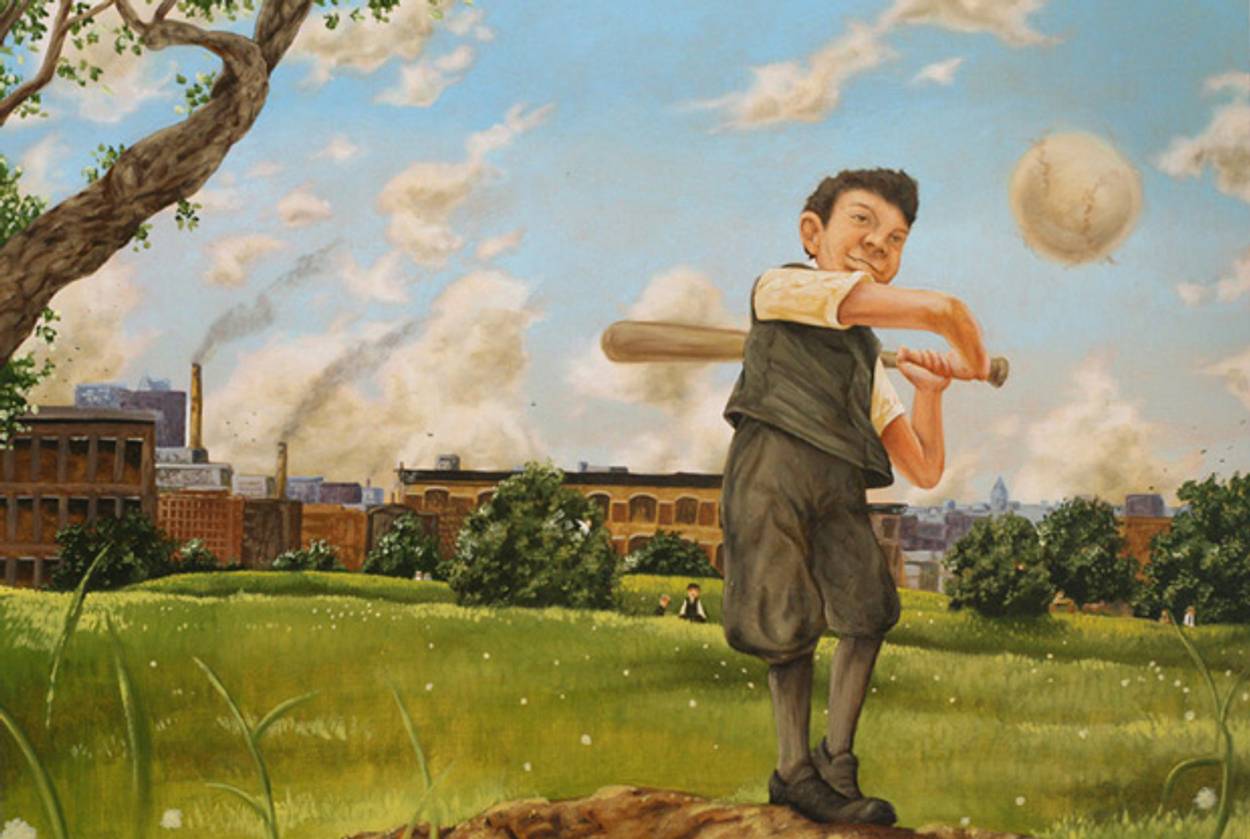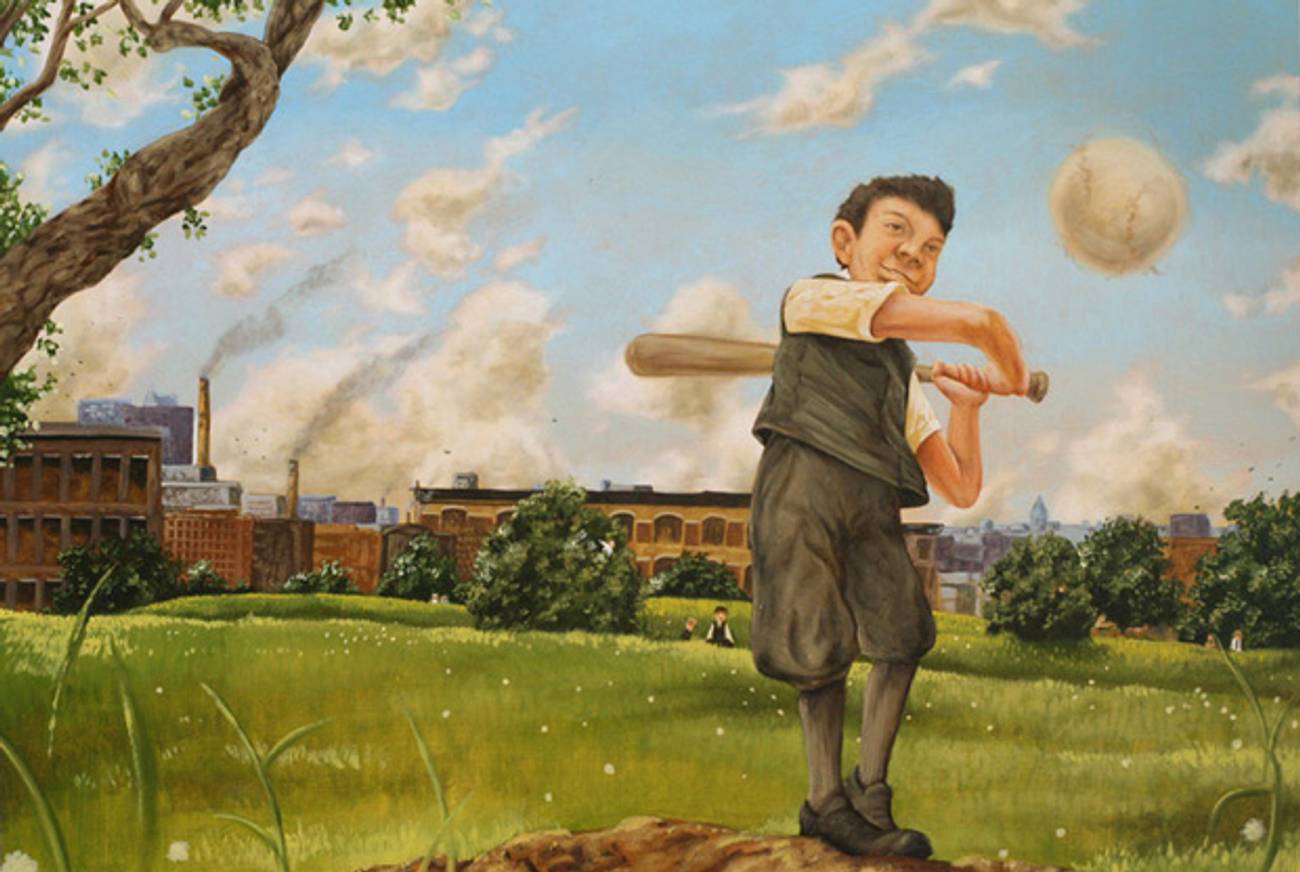Children’s Books 2011
Need Hanukkah gift ideas? From a tale of a Shabbat princess to a Lower East Side detective story, here are the year’s best Jewish kids’ books




A book opens more worlds than a toy, a piece of jewelry, a handheld-gaming device, or an iPod. (OK, maybe not an iPod.) So, here’s a list for all your kid-giving needs this Hanukkah, from the littlest people of the book to the most sophisticated teenagers.
Picture Books for Very Young Readers
Nosh, Schlep, Shluff, by Laurel Snyder, illustrated by Tiphanie Beeke (Random House Books for Young Readers). This perfect little board book introduces babies to fun-to-say Yiddish words in a nondidactic, entertaining way. It’s got the kind of zingy, rhyming text that makes babies and toddlers chirp “again!” (“If you want to start a ruckus/wave your arms and shake your tuches!”) And the painterly illustrations are sweet but not treacly.
Many Days, One Shabbat, by Fran Manushkin, illustrated by Maria Monescillo (Marshall Cavendish Shofar with PJ Library). This is a minimalist, nondenominational Shabbat book for very young readers (“One challah/many slices/One sky/many stars”), with clean, cartoony illustrations. I appreciate that the book doesn’t dictate any one way to celebrate Shabbat, stressing family togetherness and love over rules and silver-polishing.
The Shabbat Princess, by Amy Meltzer, illustrated by Martha Aviles (Kar-Ben). You know it happens: A little girl turns 3 and becomes a princess-obsessed, tiara-wearing, trilling little loon. Thankfully, the phase generally passes by age 6. But if you’re in the thick of it, my prescription is to buy Peggy Orenstein’s Cinderella Ate My Daughter for yourself and The Shabbat Princess for your wee Sleeping Beauty. The tale of a little girl who wants to welcome the Shabbat Princess instead of the Sabbath Queen, it’s charming, spiritual, nonmaterialistic, and right in the wheelhouse of the princess-crazed. The illustrations are wince-inducingly saccharine for my taste, but I am not the demo. My in-house focus group—aka my 7-year-old daughter, Maxie—loved everything about this book.
Picture Books for 4- to 8-Year-Old Readers
Naamah and the Ark at Night, by Susan Campbell Bartoletti, illustrated by Holly Meade (Candlewick). This book won starred reviews from Kirkus, Booklist, and the Horn Book, and deservedly so. It’s a poetic bedtime story told by Noah’s wife as she sings the frightened, storm-tossed denizens of the ark to sleep. The text has a soothing, rocking rhythm, and the art, by a Caldecott Honor winner, is an intriguing mix of watercolor and collage.
Lipman Pike: America’s First Home Run King, by Richard Michelson, illustrated by Zachary Pullen (Sleeping Bear Press). How had I never heard of Lipman Pike? Thanks to Richard Michelson, I now know that he was the first professional baseball player, signing a contract in 1866 for $20 a week to play third base for the Philadelphia Athletics. (Back then, the game was just called “base.” I didn’t know that either.) Pike, a Jewish hatmaker’s son from Brooklyn, faced tons of anti-Semitism while kicking butt not only in baseball but in foot races—he once beat a horse named Clarence in a 100-yard dash. I don’t think you have to be baseball-obsessed to be drawn into the story, and I loved the hyper-real, slightly trippy illustrations.
Marcel Marceau, Master of Mime, by Gloria Spielman, illustrated by Manon Gauthier (Kar-Ben). I confess I have always been a mime-mocker. Walking against the wind? Trapped in a box? Climbing a ladder? Oh cripes, cut it out and say something! But I’m eating my own words (silently! with invisible cutlery!) after reading this gripping biography. At age 5, Marcel—the son of a kosher butcher in Strasbourg, France—is determined to become a silent actor like Charlie Chaplin. At 16, he joins the French Resistance to fight the Nazis. He alters photos and forges ID cards to make other children look too young to be sent to the camps and secretly leads groups of Jewish children across the Swiss border to safety. After the war, he becomes the artist he always wanted to be. The luminous pencil and watercolor illustrations complement the text beautifully.
Chanukah Lights, by Michael J. Rosen and Robert Sabuda (Candlewick). Words fail. This pop-up book is so stunning, so gorgeous, you will be terrified to allow your child to touch it. Sabuda’s all-white pop-ups against brightly colored backgrounds depict the celebration of Hanukkah throughout history and throughout the world.
The Story of Esther, by Eric A. Kimmel, illustrated by Jill Weber (Holiday House). There were a bunch of cute Purim books out this year, but Maxie and I both liked this one best. It’s a sophisticated but still kid-friendly retelling, dramatic and immersive. It is brilliantly colored and folk-arty, with Moorish flair. I love watching Maxie study the painting contrasting Esther’s simple ponytail and outfit with the ungapatchka looks of the painted ladies of the royal court.
I Will Come Back for You, by Marisabina Russo (Schwartz & Wade). “There is sadness and death in this book,” Maxie warned me. “You might not want to give this to someone below second grade.” Maybe not, but I do think it’s a delicately handled, well-done way to introduce obliquely the topic of the Holocaust to very young readers. The plot: Safe in America, Nonna decides it’s finally time to tell her granddaughter the story behind each charm on her bracelet. We learn how Nonna’s family in Italy escaped the Nazis—the bicycle charm represents the brothers who smuggled Nonna’s mama into the countryside; the pig charm represents the squirming piglets in a basket under which kind Signore Brunelli hid Nonna and her brother. Russo’s paintings are bright and warm.
Chapter Books for Middle-Grade Readers
The Cats in the Doll Shop, by Yona Zeldis McDonough, illustrated by Heather Maione (Viking Juvenile). A follow-up to The Doll Shop Downstairs, The Cats in the Doll Shop is a perfect chapter book for kids who have moved beyond easy readers but are not quite ready for longer, more complex narratives. Fans of Clementine and Gooney Bird Greene will love the sweet, low-stress, old-fashioned tale of a Lower East Side tenement family coping with stray neighborhood kitties, a mean old neighbor and a frightened, newly arrived cousin from the old country. McDonough’s book has that warm, timeless All-of-a-Kind-Family/Penderwicks/Saturdays thing going on, and it’s all to the good.
When Life Gives You OJ by Erica Perl (Knopf). Yay! A kid-friendly, contemporary, funny middle-grade novel with Jewish protagonists and day-to-day lives that modern-day, acculturated readers will find familiar. It’s about a girl, her zayde, and a quest for a pet dog. No shtetls, just kids on bikes in the burbs, with heart and humor and a bissel Yiddish.
OyMG by Amy Fellner Dominy (Walker Books for Young Readers). Another contemporary tale, this one for slightly older readers. An assertive, funny, articulate girl who wants to be a debate star hides her Jewish identity to try to get a scholarship to a ritzy Christian prep school with a great debate team. The book deals with serious social and ethical issues, but it isn’t heavy-handed The fact that there’s a cute boy involved will appeal to reluctant readers. (Also: Another crazy zayde.) The author is a playwright, and it shows. She’s got a terrific knack for dialog.
Music Was It: Young Leonard Bernstein by Susan Goldman Rubin (Charlesbridge). I opened this with a sigh, expecting the usual dense, hyper-sincere, spinach-y, plodding Jewish biography. I was wrong. This book reads like a juicy novel, and Rubin’s copious research is seamlessly integrated into the story. Kids with singular passions will relate to young Lenny’s love of music and determination to make it his career despite his unsupportive father’s constant demands that he go into the family perm-equipment business. The book follows Lenny from childhood through his triumphant conducting debut at Carnegie Hall. It’s an effortless read, and even I, who cares not a whit about classical music, was swept up.
Chapter Books for Young Adult Readers
Deadly by Julie Chibbaro (Atheneum). This medical thriller is so exciting it’s like an episode of CSI with pages. It’s 1906, and a poor 16-year-old girl from the Lower East Side gets a typing job at the Department of Health and Sanitation. Her boss—on whom she develops a raging crush—is working on a new theory of disease transmission, and soon Prudence joins him in hot pursuit of Typhoid Mary. Like the Newbery Honor-winning Evolution of Calpurnia Tate, this is really the story of a girl’s intellectual awakening. It’s not about marrying the cute doctor; it’s about realizing you could be a doctor. I admit it: I cried.
Flesh and Blood So Cheap by Albert Marrin (Knopf). Yes, I am obsessed with the Triangle Shirtwaist Fire, one of the most gripping and distressing chapters in American labor history. But can we argue that my obsession makes me a more critical reader of books about it? Trust me, this is the single best book for young people about what happened on that fateful day in 1911. But hey, don’t take my word for it: Flesh and Blood So Cheap has gotten spectacular reviews and was a National Book Award finalist. And for good reason; Marrin’s storytelling is fluid and fast-paced; the book’s jam-packed with eye-catching photos (some gruesome); and Marrin offers a nuanced explanation of the fire and its legacy, both national and global, in a well-designed, oversized volume. Essential.
The Berlin Boxing Club by Robert Sharenow (HarperTeen). This is an exciting, unpredictable read for both boys and girls. Karl is a skinny, blond, non-Jewish-looking 14-year-old growing up in an artsy family in Germany just as the Nazis are coming to power. After getting beaten up at school, he winds up getting trained in boxing by the legendary (real-life, non-Jewish) boxer Max Schmeling, an old friend of his dad’s. As Karl’s fighting skills improve, life in Germany gets more and more dangerous for his family. The book is based on the germ of a true story about Schmeling rescuing two Jewish boys during Kristallnacht. A pulpy page-turner, it’s at once a historical novel and a sports book. Despite the book’s obsession with toughness, it isn’t homophobic; one sympathetic character is a cross-dressing nightlife impresario (or would it be impresaria?) named The Countess.
Happy reading, and happy Hanukkah.
Marjorie Ingall is a columnist for Tablet Magazine, and author of Mamaleh Knows Best: What Jewish Mothers Do to Raise Successful, Creative, Empathetic, Independent Children.
Marjorie Ingall is a former columnist for Tablet, the author of Mamaleh Knows Best, and a frequent contributor to the New York Times Book Review.